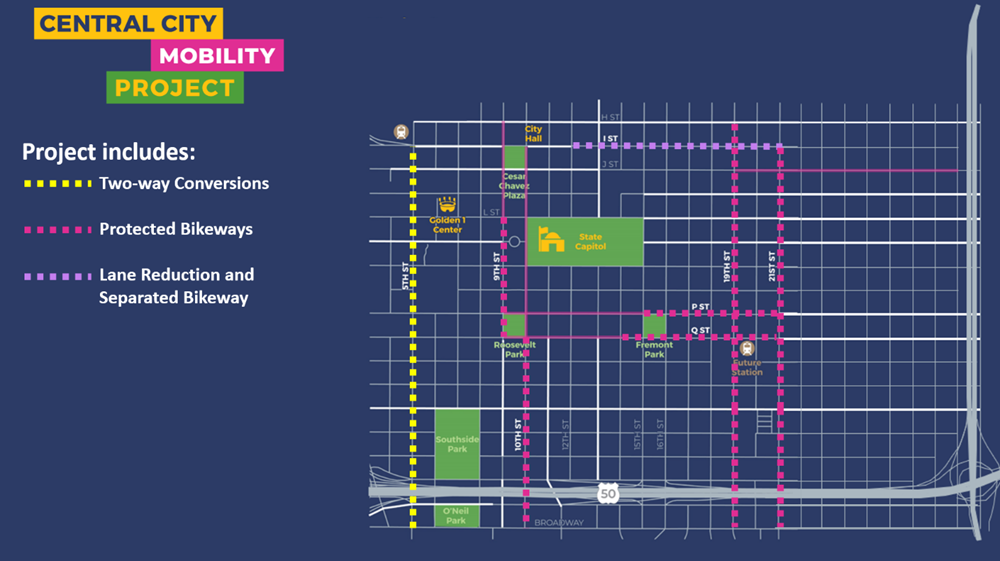
We’ve fielded a number of emails and texts asking us about the new protected bikeways going in due to the Central City Mobility Project, currently under construction in Sacramento.
We sent our questions over to the Central Mobility Project Team, and here are their answers to the most FAQs. Check out the website and don’t hesitate to reach out to the Central Mobility Project Team.
Why on the left?
When designing separated bikeways, our (the City’s transportation planners) current approach is to opt for the side which has the fewest inherent conflicts. The presence of active bus routes with frequent stops is one of the factors taken into account, as well as if one side has notably more driveways/alleys/cross streets.
On 19thStreet, because of the presence of the rail running between 19th and 20th Street, there are significantly fewer alley crossings, driveways and cross-streets on the east side of the street, which is the left side. This allows for more uninterrupted bikeway with fewer vehicle conflict points.
These are the primary considerations of picking sides, but other factors include feedback we received that many users of the northbound 21st Street bikeway may be heading to locations to the west (downtown, convention center, Memorial Auditorium, etc), and that a left side bikeway would be consistent with common travel patterns.
This is similar to what is currently on P, Q, and 9th Streets (on the left) that were installed in 2018-19.
Left side design aligns with best practices including those from the Federal Highway Administration, Caltrans, NACTO, and others on one-way streets when there’s transit or more conflict on the right.
Why different from 10th and J Streets?
10th Street doesn’t have an active RT bus route, and the State Capitol is a significant destination, so that bikeway was placed on the right.
J Street does have a bus route, but the bikeway was placed on the right to avoid conflict with the freeway ramps at Cap City Freeway.
Making turns
Making right turns from a left side bikeway can be done either by making a two stage turn or leaving the bikeway in advance and taking the lane. This would be the same if the bikeway was on the right and one wanted to make a left turn.
Why separated bikeways?
The city’s goal is to expand a low-street network of bikeways that is all ages and abilities – a network that is comfortable for someone who isn’t a ‘bicyclist’ but is someone who might choose to travel by bicycle. Or someone who is 12 years old. We know, based on data from other cities, that separated bikeways can increase the number of people who choose to travel by bicycle and that’s one of our City’s goals.

